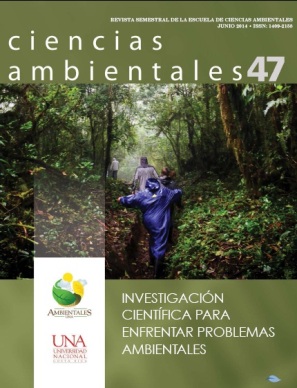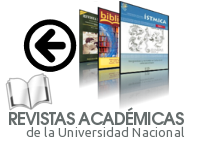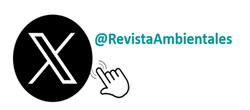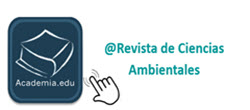Interpretación del contenido de mercurio en muestras nacionales de pez vela (Istiophorus platypterus) y marlin (Makaira spp. o Tetrapturus spp.) a partir de parámetros toxicológicos internacionales
DOI:
https://doi.org/10.15359/rca.47-1.4Palabras clave:
Pez vela, marlín, mercurio, metilmercurio, bioacumulación, biomagnificaciónResumen
Se presentan los datos sobre el contenido de mercurio total en 11 muestras de pez vela y 11 de marlín tomadas en comercios nacionales -donde se expenden con esos nombres-, obtenidos en un estudio conducido por la Federación Costarricense de Pesca. En pez vela, las concentraciones variaron entre 0,85 y 1,30 mg de mercurio/kg de pescado, con un promedio de (1,07±0,17) mg de mercurio/kg de pescado, y en marlin entre 0,41 y 1,18 mg de mercurio/kg de pescado, con un promedio de (0,83±0,27) mg de mercurio/kg de pescado. Ambos casos exhiben valores cercanos al límite máximo recomendado por la Organización Mundial de la Salud (OMS) de 1 mg de mercurio/kg de pescado para peces depredadores. Al menos el 64% de las muestras igualan o superan el umbral toxicológico de la OMS para la ingesta semanal provisional tolerable, PTWI, calculado con base en porciones de pescado entre 100 g y 150 g. Los resultados indican la presencia de mercurio en estas muestras, y se utilizan para interpretar el contenido de mercurio a partir de los parámetros de la OMS, y proponer recomendaciones de consumo para Costa Rica. Los resultados son coherentes con el fenómeno mundial de acumulación de mercurio en los mares y en depredadores marinos, documentados con un extenso número de referencias.
Referencias
Aarts, H., Biewinga, E. y Van Keulen, H. (1992). Dairyfarming systems based on efficient nutrient management. Neth. K. Agric. Sci. 40, 285-299.
Bacon, S., Lanyon, L. y Schlauder, R. (1990). Plant nutrient flow in the managed pathways of an intensive dairy farm. Agron. J. 82, 755-761. http://dx.doi.org/10.2134/agronj1990.00021962008200040021x
Bouldin, D. y Klausner, S. (2002). Managing nutrients inmanure: General principles and applications to dairy manure in New York. En Hatfield, J. L. y Stewart, B. A. (Eds.) Animal waste utilization: Effective use of manure as a soil resource. USA: Lewis Publishers.
Broadbent, F. (1986). Effects of organic matter on nitrogen and phosphorus supply to plants. En Chen, Y. y Avnimelech, Y. (Eds.) The role of organic matter in modern agriculture. The Netherlands: Martinus Nijhoff Publishers. http://dx.doi.org/10.1007/978-94-009-4426-8_2
Burkholder, K., Guyton, A., Mckinney, J. y Knowlton, K. (2004). The effect of steam flaked or dry ground corn and supplemental phytic acid on nitrogen partitioning in lactating dairy cows and ammonia emission from manure. J. Dairy Sci. 87, 2546-2553. http://dx.doi.org/10.3168/jds.S0022-0302(04)73379-2
Castrillo, L. (2014). Leche de cabra consolida nuevos mercados. Revista UTN Informa 68, 58-60.
Castro, A., Leyva, J., Sánchez, H., Osuna, A. (2009). Guía para la Alimentación de Caprinos en Baja California Sur, México [Folleto para Productores Nº1]. Instituto Nacional de Investigaciones Forestales, Agrícolas y Pecuarias.
Castro, A. (2003). Historia de la caprinocultura en Costa Rica. Disponible en www.mag.go.cr/biblioteca_virtual_animal/cabra_historia.html
Chambers, B. J., Smith, K. A. y Pain, B. F. (2000). Strategies to encourage better use of nitrogen in animal manures. Soil Use Manage 16, 157-161. http://dx.doi.org/10.1111/j.1475-2743.2000.tb00220.x
Domburg, P., Edwards, A., Sinclair, A., Chalmers, N. (2000). Assessing nitrogen and phosphorus efficiency at farm and catchment scale using nutrient budgets. Journal of the Science of Food and Agriculture 80, 1946-1952. http://dx.doi.org/10.1002/1097-0010(200010)80:13<1946::AID-JSFA736>3.0.CO;2-Q
Dou, Z., Lanyon, L. E., Ferguson, J. D., Kohn, R. A., Boston, R. C. y Chalupa, W. (1998). An integrated approach to managing nitrogen on dairy farms: evaluation of farm performance using the Dairy Nitrogen Planner. Agron. J. 90, 573-581. http://dx.doi.org/10.2134/agronj1998.00021962009000050001x
Elizondo, J. (2006). El nitrógeno en los sistemas ganaderos de leche. Agron. Mesoam. 17 (1), 69-77. http://dx.doi.org/10.15517/am.v17i1.5068
Elizondo, J. (2004). Consumo de sorgo negro forrajero (Sorghum almum) en cabras. Agronomía Mesoamericana 15 (1), 77-80. http://dx.doi.org/10.15517/am.v15i1.11932
Elrod, C. y Butler, W. (1993). Reduction of fertility and alteration of uterine pH in heifers fed excess ruminally degradable protein. Journal of Animal Science 71, 694-701.
Fenton, G. y Helyar, K. (2000). Soil acidification. En Charman, P. y Murphy, B. (Eds.) Soils: Their properties and management (ed. 2) (pp. 223-237). New York: Oxford University Press.
French, M. (1970). Observaciones sobre las cabras. FAO: Estudios agropecuarios 80.
Follett, R. (2001). Nitrogen transformation and transport processes. En Follett, R. y Hatfield, J. (Eds.) Nitrogen in the environment: Sources, problems and management (pp. 17-44). The Netherlands: Elsevier Science. http://dx.doi.org/10.1016/b978-044450486-9/50004-2
Funaki, Y. y Parris, K. (2005). The OECD agricultural nutrient balance indicators: establishing a consistent ECD set of nitrogen and phosphorus coefficients. En European Commission Workshop-Nitrogen and Phosphorus in Livestock Manure.
García, M. I., Castro, J., Novoa, R., Báez, D. y López, J. (2007). Caracterización del balance y la eficiencia en la utilización del nitrógeno, fósforo y potasio en las explotaciones de vacuno de leche en Galicia. Centro de Investigaciones Agrarias de Mabegondo, Xunta de Galicia. En XLVI Reunión Científica de la SEEP (pp. 440-446).
Goulding, K., Jarvis, S. y Whitmore, A. (2008). Optimizing nutrient management for farm systems. Phil. Trans. R. Soc. B. 363, 667-680. http://dx.doi.org/10.1098/rstb.2007.2177
Halberg, N., van der Werf, H., Basset-Mens, C., Dalgaard, R. y De Boer, I. (2005). Environmental assessment tools for the evaluation and improvement of European livestock production systems. Livestock Production Science 96, 33-50. http://dx.doi.org/10.1016/j.livprodsci.2005.05.013
Haygarth, M., Chapman, P., Jarvis, S. y Smith, R. (1998). Phosphorus budgets for two contrasting UK grassland farming systems. Soil Use Management 14, 160-167. http://dx.doi.org/10.1111/j.1475-2743.1998.tb00635.x
Herrero, M., Gil, S., Flores, M., Sardi, G. y Orlando, A. (2006). Balances de nitrógeno y fósforo a escala predial, en sistemas lecheros pastoriles en Argentina. InVet 8 (1), 9-21.
Hristov, A., Hazen, W. y Ellsworth, J. (2006). Efficiency of use of imported nitrogen, phosphorous, and potassium and potential for reducing phosphorous imports on Idaho dairy farms. J. Dairy Sci. 89, 3702-3712. http://dx.doi.org/10.3168/jds.S0022-0302(06)72411-0
Jarvis, S. (1993). Nitrogen cycling and losses from dairy farms. Soil Use Management 9, 99-105. http://dx.doi.org/10.1111/j.1475-2743.1993.tb00937.x
Jiménez, J. (2012). Aprovechamiento del nitrógeno y fósforo importados en alimentos, fertilizantes y suplementos minerales en fincas para la producción de leche en Costa Rica. (Proyecto de graduación de licenciatura). Universidad de Costa Rica, San José.
Jiménez, J. y Elizondo, J. (2014). Balance de nitrógeno en fincas para la producción de leche en Costa Rica. Agronomía Mesoamericana 25 (1), 151-160. http://dx.doi.org/10.15517/am.v25i1.14215
Jordan, E., Chapman, T., Holtan, D. y Swanson, L. (1983). Relationship of dietary crude protein to composition of uterine secretions and blood in high producing dairy cows. Journal of Dairy Science 66, 1854-1862. http://dx.doi.org/10.3168/jds.S0022-0302(83)82023-2
Jurgens, M. H. (1993). Animal feeding and nutrition (ed. 7). Iowa, USA: Kendall/Hunt Publishing Company. Keeney, D. y Hatfield, J. (2001). The nitrogen cycle, historical perspective and current, and potential future concerns. En Follett, R. y Hatfield, J. (Eds.) Nitrogen in the environment: Sources, problems and management (p. 3-6). The Netherlands: Elsevier Science.
Kellems, R. O. y Church, D. C. (1998). Livestock feeds and feeding (ed. 4). Upper Saddle River, NJ, USA: Prentice- Hall, Inc.
Knowlton, K. y Herbein, J. (2000). Phosphorus partitioning during early lactation in dairy cows fed diets varying in phosphorus content. Journal of Dairy Science 85, 1227-1236.
http://dx.doi.org/10.3168/jds.S0022-0302(02)74186-6
Koelsch, R. y Lesoing, G. (1999). Nutrient balance on Nebraska livestock confinement systems. J. Dairy Sci. 82 (suppl. 2), 63-71.
Krupnik, T., Six, J., Ladha, J., Paine, M. y van Kessel, C. (2004). An assessment of fertilizer nitrogen recovery efficiency by grain crops. En Agriculture and the nitrogen cycle. Assessing the impacts of fertilizer use on food production and the environment (pp 193-207). Washington, DC: Island Press.
Kuipers, A., Mandersloot, F. y Zom, R. (1999). An approach to nutrient management on dairy farms. Journal of Dairy Science 77, 84-89.
Laws, J., Smith, K., Cottrill, B. y Dewhurst, R. (2002). Nitrogen and phosphorus excretion by UK dairy cows. UK: Institute of Grassland and Environmental Research.
Moorby, J. y Theobald, V. (1999). The effect of duodenal ammonia infusions on milk production and nitrogen balance of the dairy cow. Journal of Dairy Science 82, 2440-2442.
http://dx.doi.org/10.3168/jds.S0022-0302(99)75495-0
Mulligan, F., Dillon, P., Callan, J., Rath, M. y O'mara, F. (2004). Supplementary concentrate type affects nitrogen excretion of grazing dairy cows. J. Dairy Sci. 87, 3451-3460.
http://dx.doi.org/10.3168/jds.S0022-0302(04)73480-3
Nelson, C. (1999). Managing nutrients across regions of the United States. Journal of Dairy Science 82 (suppl. 2), 90-100.
National Research Council (NRC). (2007). Nutrient requirements of small ruminants: sheep, goats, cervids, and new world camelids. Washington, DC: National Academy Press.
Parris, K., (1999). Environmental indicators for agriculture: overview in OECD countries. En Brouwer, E. F. y Crabtree, B. (Eds.) Environmental Indicators and Agricultural Policy (pp. 25-44). Wallingford: Cabi Publishing. http://dx.doi.org/10.1079/9780851992891.0025
Pearson, C. e Ison, R. (1997). Agronomy of grassland systems (ed. 2). United Kingdom: Cambridge University Press. http://dx.doi.org/10.1017/CBO9781139163965
Rotz, C., Taube, F., Russelle, M., Oenema, J., Sanderson, M. y Wachendorf, M. (2005). Whole-farm perspectives of nutrient flows in grassland agriculture. Crop Science 23, 2139-2159. http://dx.doi.org/10.2135/cropsci2004.0523
Sánchez, J. y Soto, H. (1998). Estimación de la calidad nutricional de los forrajes del cantón de San Carlos. II. Componentes de la pared celular. Nutrición Animal Tropical 4, 3-23.
Satter, L. (2001). Nutrient management in dairy production systems. En Proceedings Babcock Institute 3rd Technical Workshop (pp. 38-53).
Spears, R., Kohn, R. y Young, A. (2003). Whole-farm nitrogen balance on western dairy farms. J. Dairy Sci. 86, 4178-4186. http://dx.doi.org/10.3168/jds.S0022-0302(03)73648-0
Sutton, M., Oenema, O., Erisman, J., Grinsven, L. y Winiwater, W. (2011). Too much of a good thing. Nature 472, 159-161. http://dx.doi.org/10.1038/472159a
Taminga, S. (1996). A review on environmental impacts of nutritional strategies in ruminants. J. Dairy Sci. 74, 3112-3124.
Taminga, S. (1992). Nutrient management of dairy cows as a contribution to pollution control. Journal of Dairy Science 75, 345-357. http://dx.doi.org/10.3168/jds.S0022-0302(92)77770-4
Van Horn, H., Newton, G. y Kunkle, W. (1996). Ruminant nutrition from an environmental perspective: Factors affecting whole-farm nutrient balance. J. Animal Sci. 74, 3082-3102.
Vandehaar, M. y St-Pierre, N. (2006). Major advances in nutrition: relevance to the sustainability of the dairy industry. Journal Dairy Science 89, 1280-1291. http://dx.doi.org/10.3168/jds.S0022-0302(06)72196-8
Walker, F. (2000). Best management practices for phosphorus in the environment (Publication No. 1645). Tennessee: Agricultural Extension Service, The University of Tennessee.
White, S., Sheffield, R., Washburn, S., King, L. y Green, J. (2001). Spatial and time distribution on dairy cattle excreta in an intensive pasture system. J. Environmental Quality 30, 2180-2187. http://dx.doi.org/10.2134/jeq2001.2180
Wu, Z. y Satter, L. (2000). Milk production during the complete lactation of dairy cows fed diets containing different amounts of protein. J. Dairy Sci. 83, 1042-1051. http://dx.doi.org/10.3168/jds.S0022-0302(00)74968-X
Descargas
Publicado
Cómo citar
Número
Sección
Licencia
A partir del 17 de mayo del 2018 la licencia ha sido actualizada a:

Esta obra está bajo una Licencia Creative Commons Atribución-NoComercial-CompartirIgual 4.0 Internacional.



















